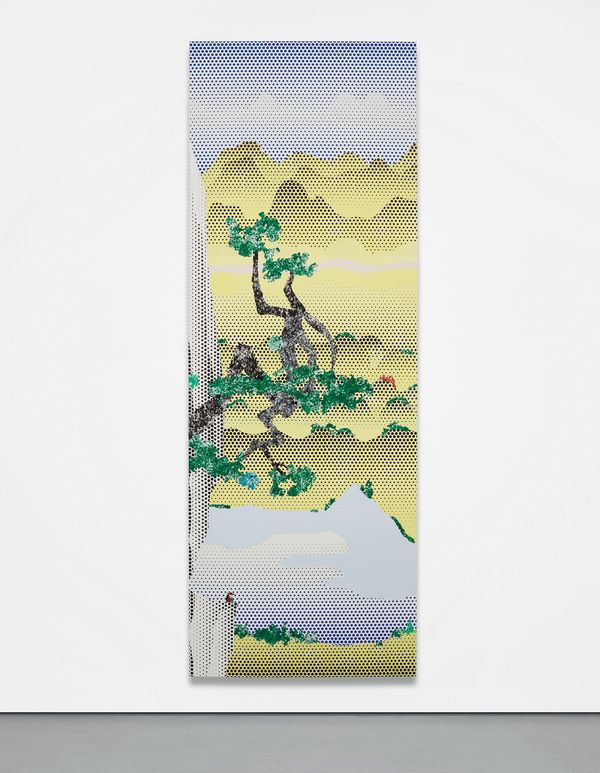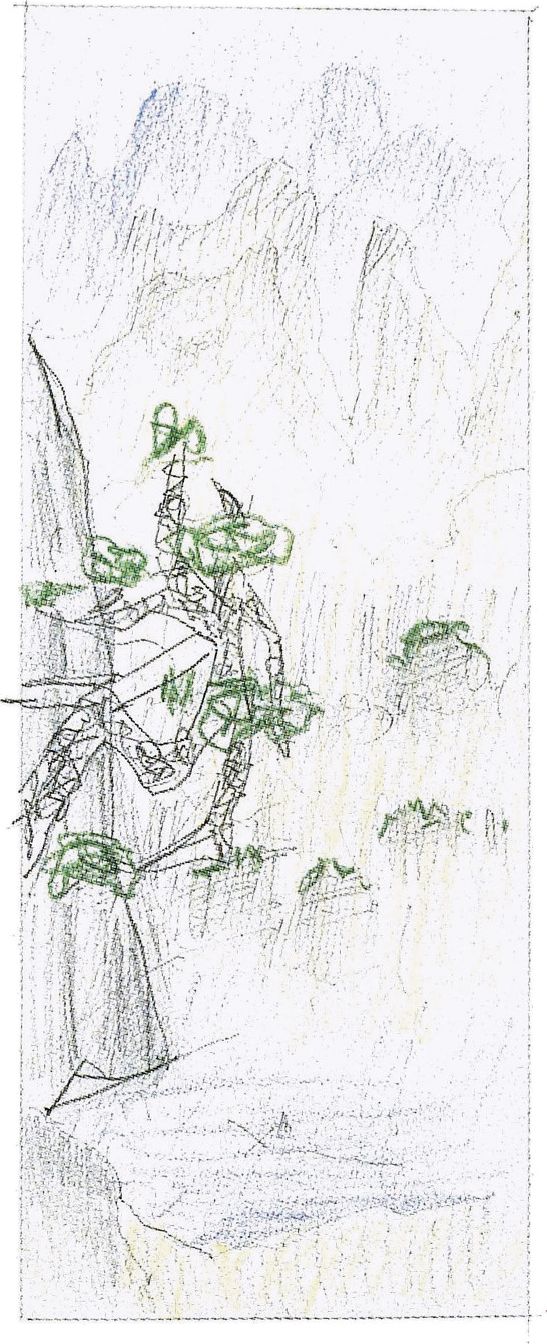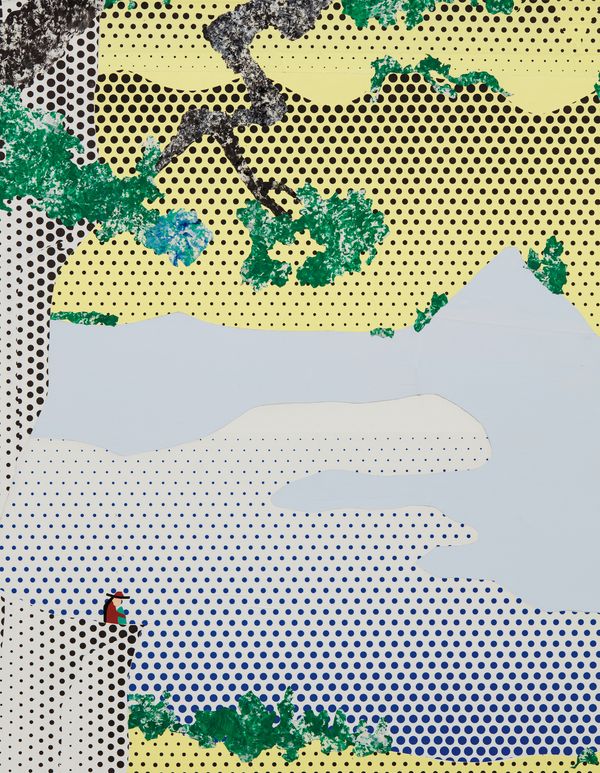Artist in his studio © Estate of Roy Lichtenstein
A product of a half-century-long love affair with classical Chinese art, Roy Lichtenstein's Landscapes in Chinese Style is one of the famed Pop-Art pioneer's most nuanced, analytical and breathtaking series of productions. Despite his long-standing interest in the subject matter, the inspiration for its genesis came from the 'Degas Landscapes' exhibition at the Metropolitan Museum of Art New York, held in 1994 and focused on Parisian Impressionist Edgar Degas. There, Lichtenstein became fascinated with the idea that amorphous, monochromatic shapes could actually be representational despite their non-figurative nature.
However, it was the palpable atmosphere of these monotypes that drew Lichtenstein to make links to Chinese landscape painting — ultimately acting as the catalyst for the creation of this work from our 20th Century & Contemporary Art & Design Evening Sale in Hong Kong.
Roy Lichtenstein Landscape with Poet (Study), 1995
In Landscape with Poet, the artist reminds us of his wholly unique ability to engage and form aesthetic conversations with the work of other artists and cultures — reappropriating them within his own lexicon of Benday dots, black contours and monochromatic zones. Within the Landscapes in Chinese Style series, this image of Landscape with Poet is one of the earliest known examples of vertical paintings that the artist had drafted. It became realized as a series of studies that include a graphite and colored pencil version from 1994 (shown below), this finished painting from 1995, as well as a lithograph and screenprint version of an edition of 60 from 1996. Differing from the other two versions, our lot is a unique, fully realized artwork, composed of a multi-layered collage of tape, painted and printed paper on board where the artist's synthetic process becomes clear upon closer inspection.
Roy Lichtenstein Landscape with Poet (Study), 1994. Graphite and colored pencil on paper © Estate of Roy Lichtenstein
Such use of painted pieces of paper echoes the techniques and materials used by Henri Mattise, with his famed "cut-outs" from the latter half of his career. Lichtenstein then evokes comparisons to classical Chinese masters, such as Mu Qi and Guo Xi, through an intricate matrix of graduated "Benday dots," stenciled meticulously in order to give the illusion of the image being printed, with the intention of rendering the work mechanical. The juxtaposition of the painting's hand-crafted quality with the artist's intention of creating a mechanical-looking outcome is evident here.
Diverging and converging in alternate areas, Lichtenstein creates a sensuous perception of depth as well as a serene atmosphere of a transcendental realm, employing extraordinary gentleness largely uncommon to his oeuvre. Although the genre of landscapes was one of the first that the artist interpreted within his archetypal comic-book style of production, Chinese landscape painting allowed Lichtenstein to approach previously-explored notions of compositional principles and visual concepts from a broadened perspective, therefore acting as a vehicle for creative reinvention during what were to be the last years of his life.
...the artist's synthetic process becomes clear upon closer inspection.
Detail from Roy Lichtenstein Landscape with Poet (Study), 1995
Having attended lectures on Eastern Art history during his time at university, Lichtenstein would have been exposed to the landscapes of the Song Dynasty (960-1279), whose social and spiritual ideals permeate throughout the work. Small figures were traditionally included in landscapes not merely as an aesthetic device, but as a means of reminding the viewer of the insignificant transience of human life in the face of the universe, as well as stressing the importance of the interrelationships between man and nature. Lichtenstein mirrors such sentiment, using the vastness of nature to force us to confront our very own existence. By placing a small figure against an expansive backdrop, Lichtenstein also provides spatial orientation, as well as toying with our perceptions of scale and proportions in an innovative way, making us consider each aspect — its details, its intricacies — before interpreting the painting as a singular whole.
The true genius of this work lies in Lichtenstein's ability to fuse classical with contemporary in a way that is wholly archetypal of the artist himself. From mimicking a hanging scroll to creating voluminous depths and atmospheres within the paintings themselves, he adopts the traditional compositional and visual elements of Chinese art while imbuing the works with his own trademark techniques and motifs. Indeed in this lot, Lichtenstein uses subtle humor, as he did throughout his career, to examine and shed light on the absurdity of Western generalizations and stereotypes. The incorporation of elements such as the rice picker hat and the crooked bonsai tree are the highlights of such, as they make no distinction between Chinese and Japanese cultures; instead, he employs them as common signifiers of Asian culture.
Even the title of the series itself makes a sarcastic accusation that there is a singular, universal style of Chinese painting. Through such visual and contextual clichés, Lichtenstein makes us question how we perceive and often cluster other cultures without devoting sufficient time to understanding them.



